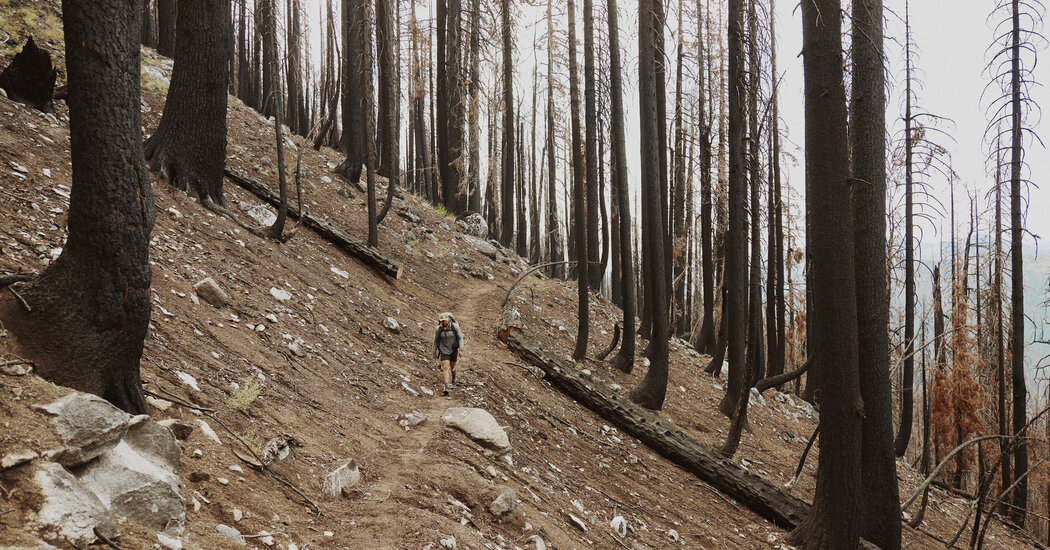The already grueling 2,600-mile hike now includes the added challenges of global warming, which can mean a lack of shade and exposure to smoke and fire.
In the desert near Agua Dulce, north of Los Angeles, hikers along the Pacific Crest Trail who reached mile marker 502 encountered a cistern of water that smelled bad and tasted worse, with a dead rat floating inside. They got out their filters and refilled their bottles anyway. “Will update if I get sick,” one wrote on a message board to those coming up behind.
The message was just one sign of how global warming is affecting life along the trail, where, during a hot season nearly devoid of rain, water tanks and caches were more important than ever, the last line of defense against dehydration. At least some hikers willing to take their chances.
Thru-hikers on the P.C.T. spend up to five months walking from Mexico to Canada, through a landscape that ranges from high desert scrub to giant sequoias, basalt craters and alpine meadows. The route changes slightly each year, meaning that the trail’s official length, 2,650 miles, is really only an estimate.
What is a fact, now, is the imprint of climate change, felt along the whole trail in the form of weirder weather, bone dry soil and, most of all, the increasing threat of wildfires. Fire is a hazard that leaves other hazards in its wake: meager shade, disruptions to streams and water sources, “blow down” trees you have to clamber over or walk around, and fine black soot that lingers in the back of hikers’ throats and aggravates open blisters. Fire scars — the blackened expanses a wildfire leaves behind — can take days to walk through.
More than 1,600 miles of the trail run through California. Over the last decade, record after record for high temperatures, droughts and wildfires have been broken in the state. Last year, the Dixie fire, the largest in California history, burned 85 miles of the P.C.T. It was the first fire ever to cross the crest of the Sierra Nevada.
In late July, I intercepted the main burst of northbound thru-hikers — the so-called bubble — on a 40-mile section of trail north of Mount Shasta as it jogs west over rugged granite peaks toward the California-Oregon border.
“It used to be a race against getting to Washington before the snow;…
Click Here to Read the Full Original Article at NYT > Travel…
